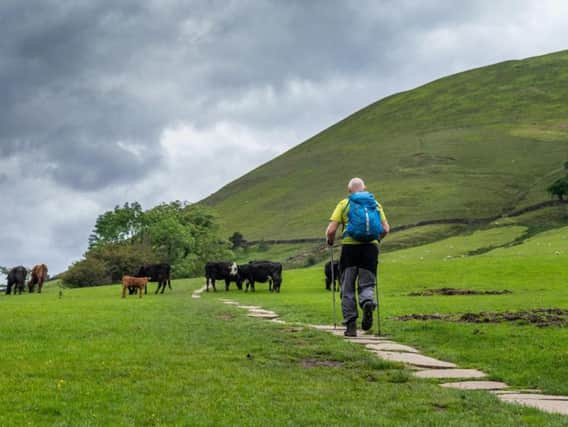Why National Parks are just as important today as they were when they were created 70 years ago


Andrew Hall, campaigns and communications officer for the national charity Campaign for National Parks said the Park vision set out more than 70 years ago has stood the test of time.
“Every day people are out there, inspired by their peaks, cliffs and woodland. The Parks are there for everyone always,” he said.
Advertisement
Hide AdAdvertisement
Hide AdIt was on December 16, 1949 when the National Parks and Access to the Countryside Act came into being.
Under the shadow of devastation cast by the Second World War, campaigners had lobbied, protested and trespassed to demand legislation which would protect the landscapes across England and Wales.
It was these campaigners who founded the Standing Committee on National Parks, now the Campaign for National Parks.
The campaigners were determined that as England’s countryside had been used on recruitment posters during the war, the landscape these men had gone to their deaths to defend must be safeguarded for the future.
Advertisement
Hide AdAdvertisement
Hide Ad“It was about preserving that vision of the countryside, when the reality was an increasing urban sprawl. The National Park movement was born out of necessity to protect the countryside,” Mr Hall explained.
One of the leading campaigners for the National Park movement was Ethel Haythornthwaite.
Advertisement
Hide AdAdvertisement
Hide AdThe daughter of a wealthy industrialist who built the family home in Sheffield, Ethel was widowed during the First World War and sought solace in the surrounding countryside of the Peak District.
She helped to make the successful case for the Act which then led to the Peak District National Park becoming the first designated protected space.
In Yorkshire, it was followed by the North Yorkshire Moors National Park in 1952 and the Yorkshire Dales National Park in 1954.
As well as conserving the landscape, there were social arguments for the creation of the National Parks.
Advertisement
Hide AdAdvertisement
Hide AdCities were industrial and the air was polluted by the smoke and dirt coming from the mills and factories.
“People needed to get away from the cities to enjoy the fresh air and wonders of the countryside,” Mr Hall said.
Advertisement
Hide AdAdvertisement
Hide Ad“And it was incredibly successful. People could benefit mentally from enjoying the wildlife and the dark skies.”
The environmental, social and health factors that drove the founding members of the National Parks to take action remain just as relevant today.
“At a time when we face some of the biggest problems we’ve ever faced such as the disastrous decline in nature, the climate crisis and at a time when our young people feel disconnected to nature, our National Parks are more relevant than ever,” Mr Hall said.
“Just as those original campaigners knew, the tranquillity, beauty and nature in the Parks provide innumerable benefits to our lives.”
Advertisement
Hide AdAdvertisement
Hide AdBut even when the Act had been passed, creating the Parks themselves was by no means a straightforward process.
A comprehensive survey of all the footpaths and bridleways within each Park needed to be carried out so that decisions could be made as to which had public status and which were to be treated as private.
Letters held at the North Yorkshire Records Office show that in the Dales, this preparatory work was a time consuming business that involved all three levels of local government.
With parishes dragging their heels, it was the Ramblers Association that volunteered to get the necessary surveys completed.
The Association was also among the founding members of the Campaign for National Parks.